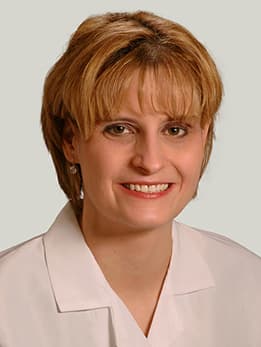Diagnosing Epilepsy
Diagnosing Epilepsy Conditions
We know how important a correct diagnosis is to a successful treatment plan. To help us make an accurate diagnosis, physicians use data from various tests to create functional 3D models of a patient's epileptic focus within the brain without using an invasive procedure. These models enable us to pinpoint the source of seizures. Finding the seizure source is the first step toward successful treatment.
Schedule an Appointment with an Epilepsy Expert
Obtaining Your Medical History
It’s very important for your doctors to learn as much about your seizure(s) as possible. And since you won’t likely remember the seizure well, we may need to get a description of the seizure from someone who was there when it happened.
Performing a Physical Exam
A physical exam cannot diagnose or uncover epilepsy. But results of a physical exam can help us determine things, such as how well your reflexes work, which may help us find out if part of your brain isn’t working properly.
Electroencephalogram (EEG)
An EEG measures your brain’s electrical activity as a series of squiggles called traces. Each trace corresponds to a different region in your brain. Certain abnormal patterns, such as spiking and sharp wave activities on an EEG, can help support or confirm a clinical diagnosis of epilepsy.
Epilepsy Monitoring Unit
If you experience persistent seizures, the Epilepsy Monitoring Unit (EMU) may be used to identify the type of seizures you have, where they originate and determine if you are a potential candidate for surgery. This inpatient EMU evaluation allows your provider to monitor seizures or other brain events. The information gathered in the EMU will assist our experts in accurately diagnosing your condition and finding the best treatment plan for you.
While in the EMU, you will be connected to continuous video EEG and closely monitored by the EMU team. In this controlled environment, your doctor may adjust your medication dosage or use different strategies to trigger an event. Our dedicated EMU team will provide 24/7 monitoring throughout the evaluation.
Neuroimaging Studies
At UChicago Medicine, we offer various structural and functional neuroimaging studies to help diagnose epilepsy and localize the seizure focus. These tests include high-resolution brain magnetic imaging (MRI), functional MRI (fMRI) and positron emission tomography (PET).
Magnetoencephalography (MEG) Test
MEG is a new technique for mapping brain activity by recording magnetic fields produced by electrical currents that occur naturally in the brain using very sensitive magnetometers. Since magnetic fields are less distorted than electrical fields by the skull and scalp, MEG has a better spatial resolution than EEG in detecting and localizing seizure activity in some patients with epilepsy.
Neuropsychological Testing
Many people with epilepsy may also have co-existent medical conditions, including depression, anxiety and cognitive impairments (i.e. poor memory and concentration). We often partner with a neuropsychologist to assess cognitive functions, mood and personality.
Wada Test
Epilepsy patients who are candidates for surgery may undergo a Wada test. A neuroradiologist performs the procedure in the presence of a neuropsychologist and a neurologist. The Wada test helps determine which side of the brain controls language and memory capacity of each side of the brain. This information is important for planning epilepsy surgery and minimizing the risks of language and memory deficits. With the development of more sophisticated functional MRI techniques, the Wada test can now often be avoided.






